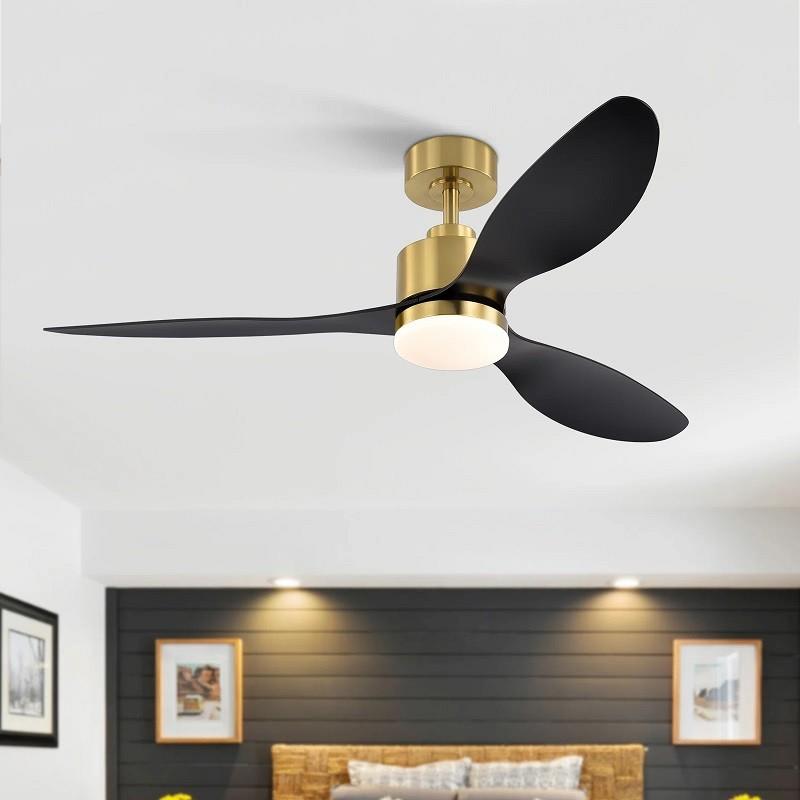In the symphony of home appliances, few items play a more crucial role than the trusty fan, providing us with respite from heat and circulation of fresh air. However, amidst our quest for comfort, an often-overlooked factor comes into play: noise. The soft hum of a fan can be a soothing background melody, but the cacophony of excessive noise can disrupt our peace and quiet. As we turn the dial, adjusting the fan speed for optimal airflow, we may unwittingly shift the decibel levels from a gentle whisper to a roaring gale. In this article, we will explore the noise level comparisons at different fan speeds, unraveling the dB ratings you need to know to make informed choices for your home or workspace. Whether you’re a light sleeper, a focused worker, or simply someone seeking a tranquil environment, understanding the relationship between fan speed and noise is essential for creating the perfect backdrop to your daily life. Let’s delve into the science behind the sound and find the balance between efficiency and serenity.
Understanding Decibel Ratings Across Fan Speed Settings
When evaluating the noise level of fans, understanding the decibel ratings associated with varying fan speeds can provide valuable insights. Decibels (dB) are measured logarithmically, meaning that each increase of 10 dB represents a tenfold increase in sound intensity. Typically, fans operate at multiple speeds—low, medium, and high—each producing different dB levels. For example, a low-speed setting might reach around 30-40 dB, which is comparable to a quiet room or whispering, while a high-speed setting could soar to 60-70 dB, resembling the sound of normal conversation or background noise in a bustling café. This variance highlights the importance of choosing an appropriate fan speed not just for cooling but also for comfort in your living environment.
To make an informed decision about your fan’s operation, it is essential to compare the dB ratings across various speed settings. The following table summarizes common noise levels by fan speed, offering a glimpse into how sound levels can affect your indoor tranquility:
| Fan Speed | dB Level | Sound Environment Comparison |
|---|---|---|
| Low | 30-40 dB | Quiet room / Whisper |
| Medium | 40-50 dB | Library / Fridge hum |
| High | 60-70 dB | Normal conversation / Café |
Moreover, it’s noteworthy that specific fan designs may influence their sound output even at similar speed settings. Factors such as blade shape, material, and motor quality contribute to the overall noise profile. Understanding these nuances is crucial when shopping for a fan that blends functionality with an unobtrusive noise level, hence ensuring you maintain a pleasant living or working atmosphere.

The Science Behind Noise Levels: How Fan Design Impacts Sound
Understanding the relationship between fan design and noise levels requires delving into several critical factors that contribute to sound production. Blade shape plays a substantial role; blades that are wider and have an optimized angle often result in a smoother airflow, thereby reducing turbulence. Additionally, the material from which the fan is constructed can significantly influence sound output—plastic fans tend to be quieter compared to their metal counterparts, which may resonate more. Other elements such as motor size and design also affect how vibrations are transmitted, ultimately impacting the dB rating at various speeds.
Another vital component is the fan’s speed settings, which typically range from low to high. As the speed increases, noise levels correspondingly rise, but this relationship can be mitigated by effective design elements. Here’s a quick overview of how different fan speeds compare in terms of decibels:
| Fan Speed | dB Rating |
|---|---|
| Low | 25-30 dB |
| Medium | 35-45 dB |
| High | 50-60 dB |
This table illustrates how noise levels increase as fan speeds rise, emphasizing the importance of considering both design and intended use when selecting a fan. By choosing a model with innovative features that focus on minimizing sound production, consumers can enjoy a more peaceful environment without compromising on airflow efficiency.

Practical Insights: Choosing the Right Fan for Your Space
When selecting a fan for your space, understanding the noise levels associated with different speeds is crucial for ensuring comfort. Every environment has its unique needs—whether you’re looking for a gentle breeze while you sleep or a robust airflow for a productive workspace. It’s important to consider not just the airflow output but also how the fan’s sound level affects your daily activities. Here are some factors to keep in mind:
- Purpose of the Fan: Analyze whether you need a fan primarily for cooling, white noise, or ventilation.
- Speed Settings: Evaluate the number of speed options available and how they correspond to noise levels.
- Decibel Ratings: Familiarize yourself with decibel ratings to make informed comparisons between models.
To better understand the relationship between fan speeds and noise levels, it’s helpful to look at a simple comparison:
| Fan Speed | Noise Level (dB) |
|---|---|
| Low | 30-40 dB |
| Medium | 40-50 dB |
| High | 50-60 dB |
This table illustrates typical noise levels you might expect from different fan speeds. Choosing a fan not only involves considering its airflow capacity but also how the sound might affect your environment. A well-balanced selection will enhance your comfort and ensure that the fan complements your activities without overwhelming your senses.

Maximizing Comfort: Tips for Managing Fan Noise Levels
Managing fan noise levels is essential for enhancing comfort, especially in workspaces and bedrooms where concentration or relaxation is key. One of the most effective strategies is to utilize fan speed settings wisely. At lower speeds, fans tend to produce less noise, measured in decibels (dB), effectively reducing distractions. If you’re seeking a quieter environment, consider running your fan at medium or low speeds during sensitive activities such as reading or sleeping. Additionally, choosing fans with noise-reducing technology or designs can significantly enhance your comfort levels.
An important aspect to consider is the positioning of your fan. A well-placed fan can minimize its perceived noise. Here are some tips to help you achieve the optimal setup:
- Elevate the Fan: Placing the fan slightly higher can help direct airflow without amplifying the noise.
- Distance Matters: Increasing distance from the fan can reduce the intensity of sound.
- Try Sound Dampening: Consider using vibration pads or mats under your fan to absorb sound.
For a better understanding of fan noise levels, consult the table below that outlines typical dB ratings associated with various fan speeds.
| Fan Speed | dB Rating |
|---|---|
| Low Speed | 20-30 dB |
| Medium Speed | 30-50 dB |
| High Speed | 50-70 dB |
In Summary
In conclusion, understanding the noise levels associated with different fan speeds not only empowers you to make informed decisions about your cooling options but also enhances your overall living or working environment. Armed with the dB ratings outlined in this article, you can navigate the often-overlooked aspect of fan operation with confidence. Whether you seek a whisper-quiet breeze for a peaceful night’s sleep or a more robust airflow for an energetic workspace, knowing the sound output can help you strike the perfect balance. As technology continues to evolve, keeping abreast of these measurements will ensure that you can enjoy optimal comfort without sacrificing tranquility. So, the next time you adjust the speed of your fan, you’ll do so with an awareness that makes all the difference. Here’s to fresh air and serene surroundings!




